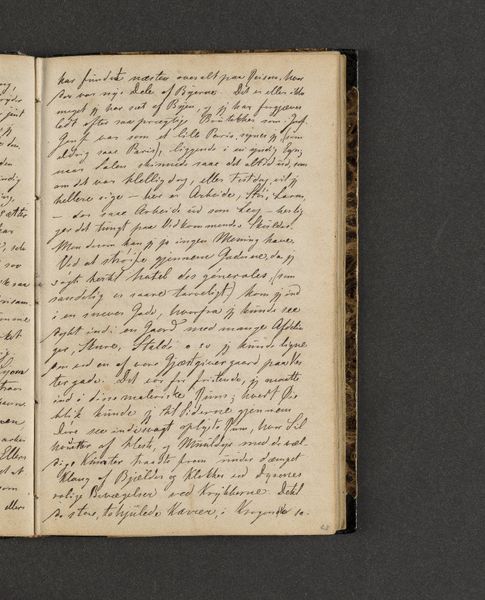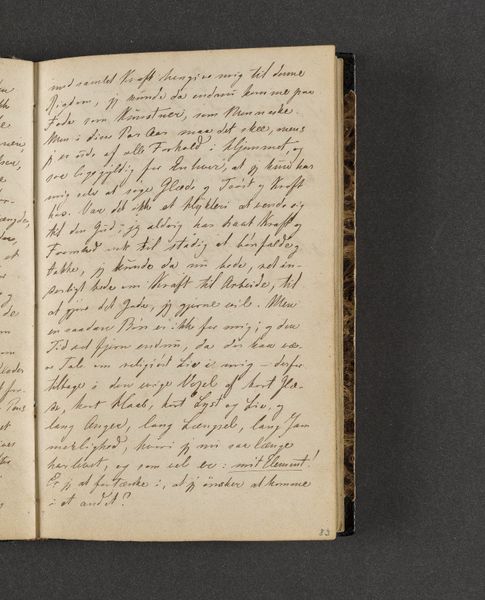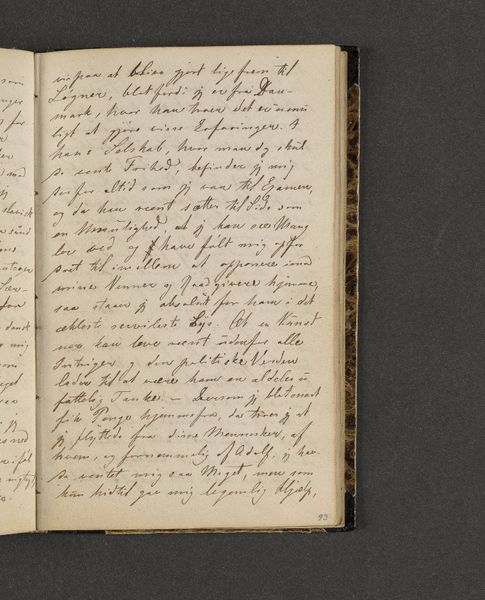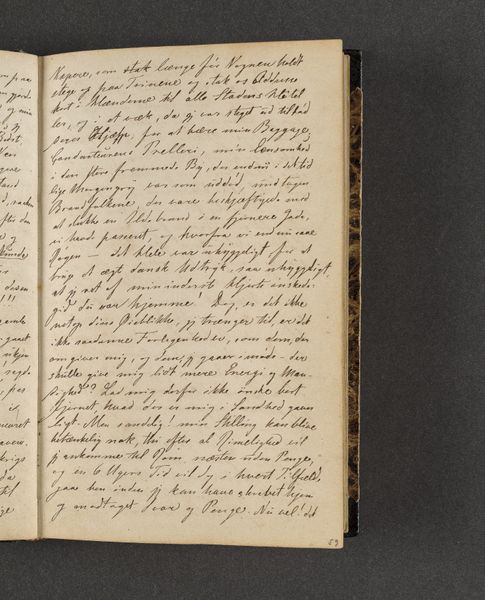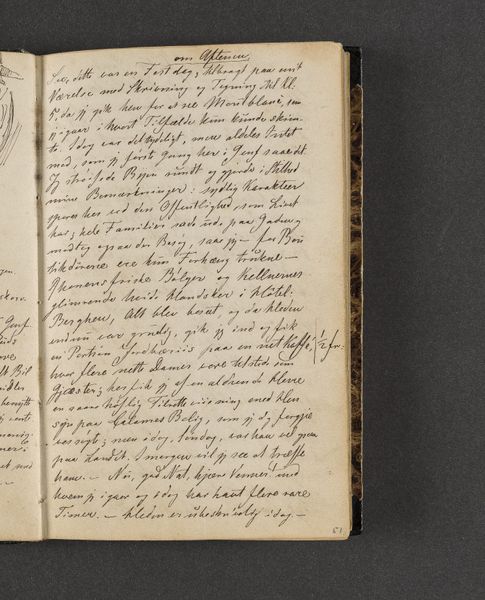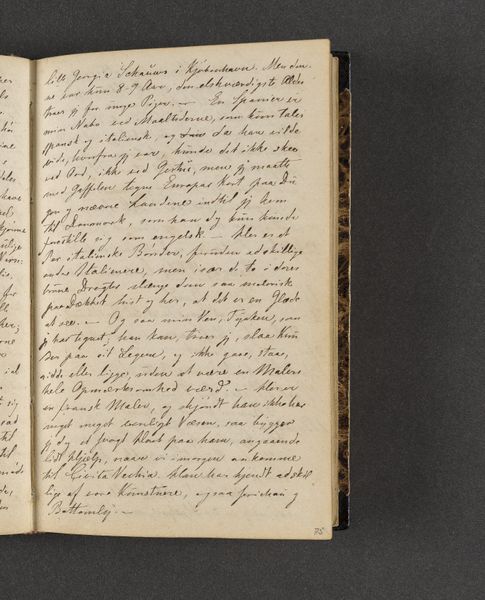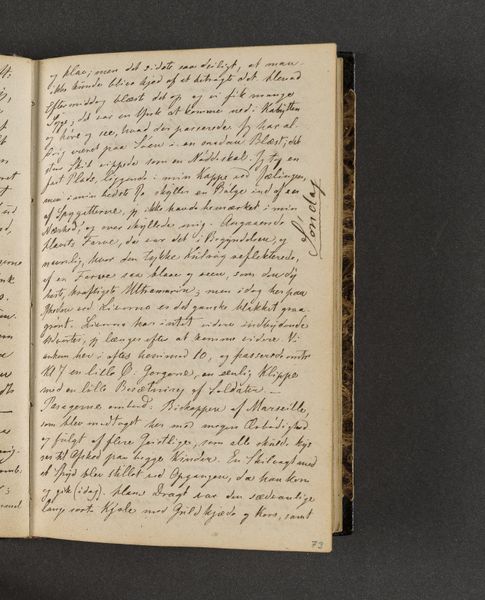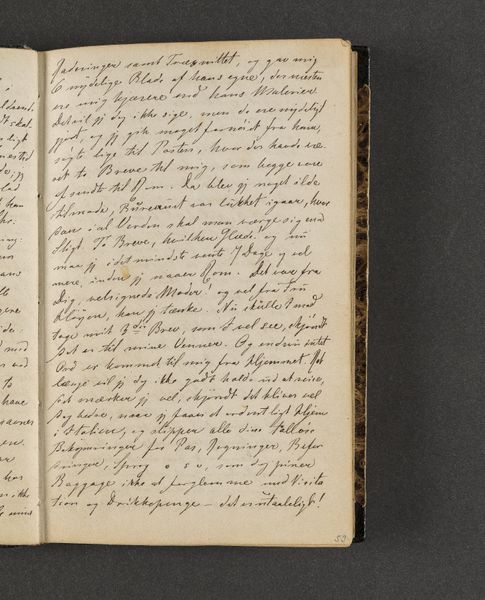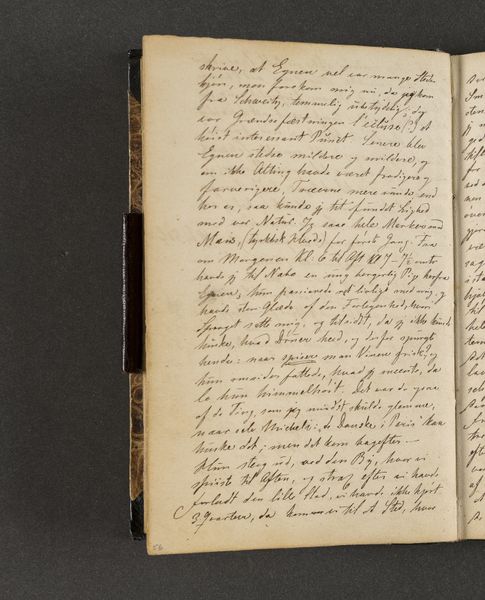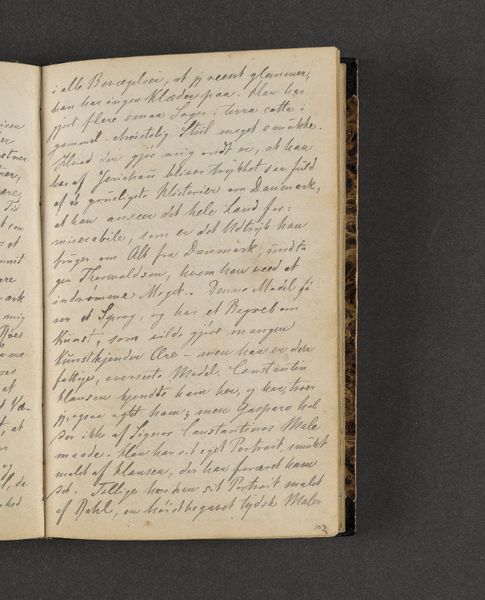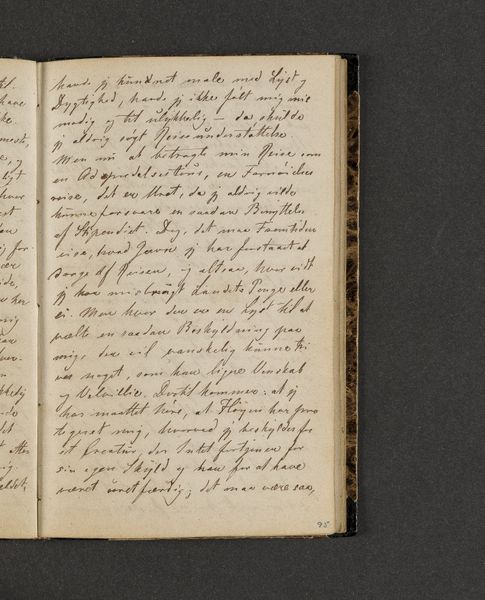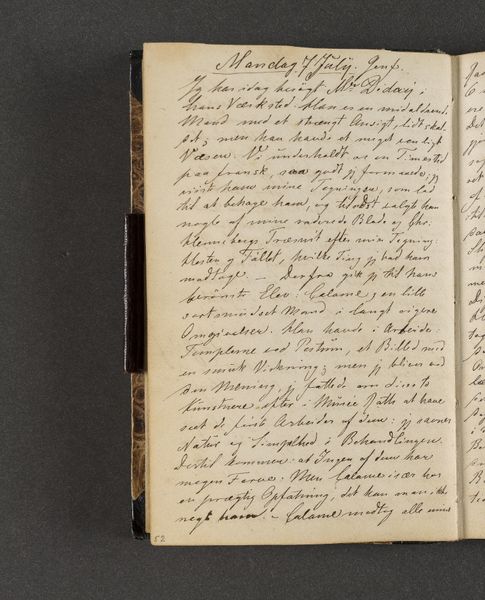
drawing, paper, ink
#
drawing
#
landscape
#
paper
#
ink
#
romanticism
Dimensions: 161 mm (height) x 103 mm (width) x 11 mm (depth) (monteringsmaal)
Curator: This is a page from "Rejsedagbog," or "Travel Journal," created in 1845 by Johan Thomas Lundbye. It’s an ink drawing on paper, and a fascinating artifact reflecting the Romantic period. Editor: My immediate reaction is how intimate it feels. The close-up view, the handwritten text…it invites you to lean in and decipher a story, a personal narrative unfolding on the page. It’s textural, dense, and creates an intriguing visual field. Curator: Absolutely. The social and historical context here is key. Lundbye was a central figure in the Danish Golden Age, a period defined by intense nationalism and a celebration of Danish landscapes and culture. Keeping this in mind, we see how the private nature of this diary—it's really more like a sketchbook with annotations—contrasts the grand landscapes for which he is more well known. This points us to the intimate sphere of an artist engaging with, documenting, and making meaning of lived space, nature, and identity. Editor: Right. How does the public reception of an artist play out in comparison to the artwork, that otherwise would only exist in a private sphere? It strikes me that this page is overflowing—with words, details, energy. The handwriting itself seems almost frenetic. I imagine the socio-political pressures of that time—the desire to establish a concrete national identity amidst external cultural forces—would manifest somehow. Curator: Indeed. And considering Romanticism's emphasis on individual experience, this diary becomes a powerful testament to Lundbye's subjective interaction with the world around him, positioning travel, place, and observation in an ever wider sphere. As the art historian, Peter Nisbet points out, travel has a powerful social-political component. Lundbye is one person acting within a broader, more complicated sphere of knowledge production. Editor: Yes. And seeing it within this frame encourages thinking through his positioning as a person, writing at a time when cultural change has vast implications to individuals living in this period. It provokes us to see these works not just for what they present, but for all the conditions that might make something emerge. Curator: Exactly. This piece invites us to think more broadly about the intersecting worlds of Romantic landscape painting. The tension that lies between individual versus collective modes of belonging at a specific socio-political setting comes forth in these pages. Editor: For me, the work foregrounds how everyday personal observations might offer insight, offering potential points to question assumptions of history, identity and the period.
Comments
No comments
Be the first to comment and join the conversation on the ultimate creative platform.
